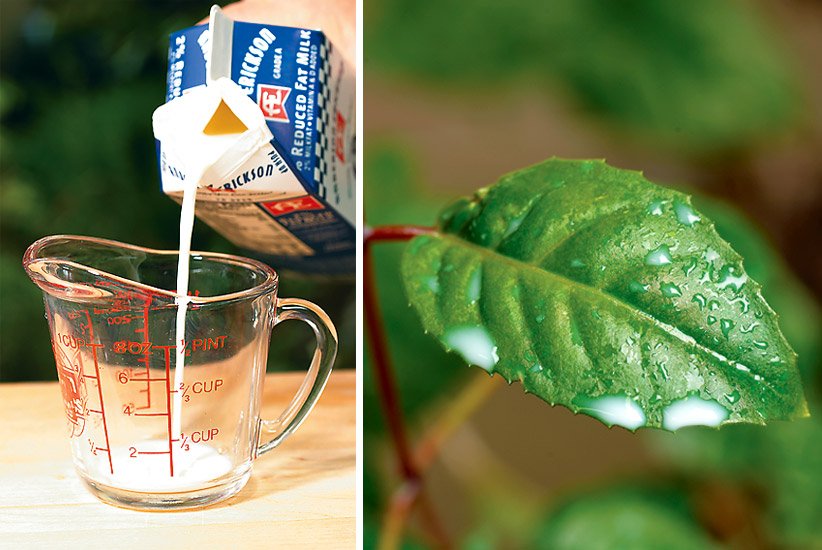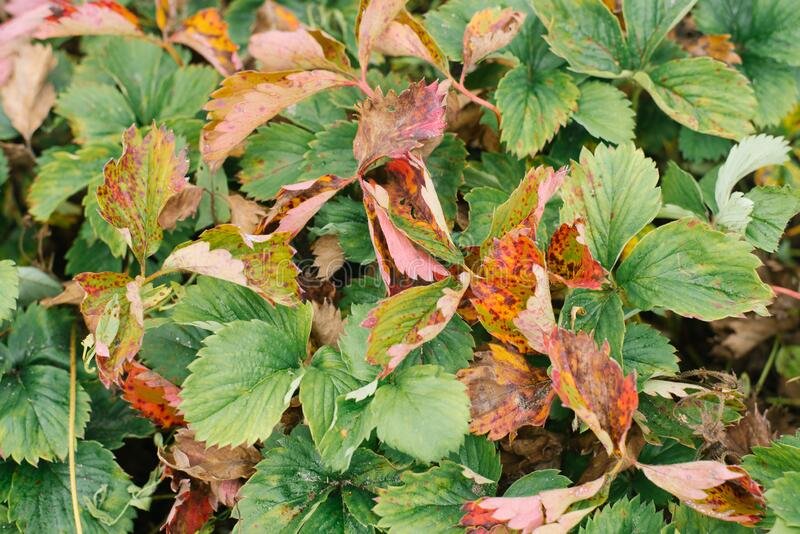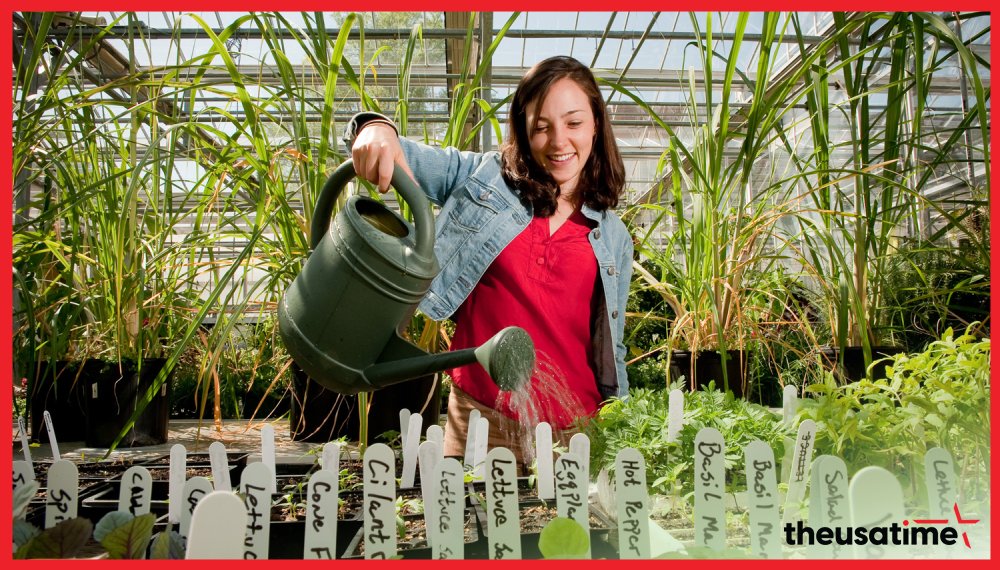Learn to identify the symptoms of debilitating diseases in your plants and take preventative measures. To begin, a holistic strategy calls for a pathogen’s identity to be determined.
[powerkit_toc title=”Table of Contents” depth=”2″ min_count=”4″ min_characters=”1000″ btn_hide=”true” default_state=”expanded”]
The next step is to select a treatment approach that is at once effective, safe, and ethical. To help you identify plant diseases, continue reading and bookmark this page.
A Dark Circle
One of the most common plant diseases on roses, but it can also affect other garden and ornamental plants, is a disease called black spot. Black, round spots appear on the upper sides of leaves as a result of this fungal disease.
Infected leaves on the lower stems usually appear first. As the disease advances, it causes the plant’s infected leaves to turn yellow and die. If it rains for more than six hours in a row or the leaves are wet for more than six hours, the black spot is an issue. The spores of black spots can be found in the leaves that have fallen.
How to Prevent & Treat Leaf Spots
Sow your seeds in soil that drains well. Provide regular organic fertilizer feedings to your plants to keep them healthy. Fungal disease in plants can be prevented by using this method. The spores of the fungus can be found in plant debris. Discard the dead leaves and infected canes that have accumulated around the plants. Compost should not be added to.

Every time you use your pruners, disinfect them with a household disinfectant. Straight from the bottle, ethanol or isopropyl alcohol can be used. Avoid drenching the leaves in water because fungal spores are spread by water, not the wind. Water the roots directly when you water. Soak hoses are ideal for watering plants that are susceptible to the plant disease.
Spots on Other Leaves (Plant Diseases)
It is possible to find fungal leaf spot disease both indoors on houseplants and in the landscape. This happens when it’s humid and warm outside. The fungi become so large that they can touch each other as the plant disease progresses.

The leaf’s surface looks more like blotches than spots at this point. Leaf spot can cause a plant to lose all of its leaves. Follow the same instructions as those for dealing with black spots.
Mildew in a Powdery Form
It’s a fungal disease that affects a variety of plants, including flowers, vegetables, and fruits, in our gardens and landscapes. Identification of powdery mildew is straightforward.
An infected plant’s upper leaf surfaces will display a white powdery substance that is most noticeable, but it can also be found anywhere else on the plant. These environments are ideal for the growth of this fungus: low soil moisture and high humidity on the plant surface. Plants in shady areas are more likely to be affected by it than those in full sun.
Anthracnose: A Plant Disease
It’s critical to know the difference between downy and powdery mildews because they have different life cycles. A white powdery substance covers the upper leaves of a plant infected with powdery mildews, a true fungus pathogen. On the other hand, downy mildew, which is more closely related to algae, produces spores that have a grayish fuzzy appearance on the undersides of leaves.

Examine for pale green or yellow spots on the upper side of older leaves to identify downy mildew. A white to grayish, cotton-like downy substance will be visible on the fungus’ lower surfaces. When it’s cool and moist outside, like in the early spring or late fall, downy mildew grows. Lower than 65°F temperatures and high relative humidity favor spore production.
Tips for Treating Downy Mildew
To thrive and spread, downy mildew relies on the presence of moisture. The disease cannot spread if there is no water on your leaves. Keep as much water away from the leaves as possible. Remember to clean up around your plants each fall to help keep disease at bay next spring.
Because it overwinters on decomposing plant matter. Powdery mildew fungicides won’t work on downy mildew, and vice versa. Using Earth’s Ally’s fungicide, powdery and downy mildew can be eliminated.
Canker
An open wound infected with fungi or bacteria is a common symptom of canker. In some cases, cankers are not life-threatening, but in others, they are. Canker is most commonly found on landscape trees and shrubs. Swollen, cracked, or dead areas on the stems, branches, or trunk may indicate the presence of a plant disease. It is possible for cankers to girdle and kill branches and foliage.
Cold, insects, drought, nutritional deficiencies, or root rot are the most common causes of plant stress, and cankers are most often found on those plants that have suffered from these problems. The pathogens can also be spread by rats.
When at all Possible, go with Hardy Varieties
The best way to improve airflow in your garden is to prune or stake your plants so that they don’t get too close together. Plants in containers can be kept out of places where they won’t get enough air. Keep the plant disease from spreading by clearing the area of any infected waste. Do not compost diseased plants; instead, throw them away. Water the plants in the morning so that they can dry out and avoid watering the leaves, which can damage them.

Suppose downy mildew is present, water later in the day because it prefers morning moisture. On the other hand, try to keep water away from the leaves as much as possible. Soaker hoses keep water in the root zone, where it is most effective at preventing the spread of spores. Before making a purchase from your local greenhouse, be sure to check all plants for signs of disease and pests. After cutting diseased plant parts, disinfect pruners.
Plant Handheld Camera
Invest in a handheld camera. Fungus and insect problems can be easily detected with a 10x hand lens. With a hand lens, you’ll be able to see things in nature that aren’t visible to the naked eye.
Apply a fungicide to all parts of the plant to prevent disease. An environmentally friendly fungicide spray that looks and feels like a plant for use on houseplants and in organic gardens, Plant Disease Control is a contact fungicide/bactericide that is safe for use on both. Earth’s Ally, which is made with food-grade citric acid, is extremely effective in treating and preventing the common plant diseases described in this article.
A healthy immune system is essential for avoiding disease (and insect) infestations. Plants that are under stress are more vulnerable to disease and pests. Think about your body’s defenses. The more effective it is in combating disease, the better it will be.



